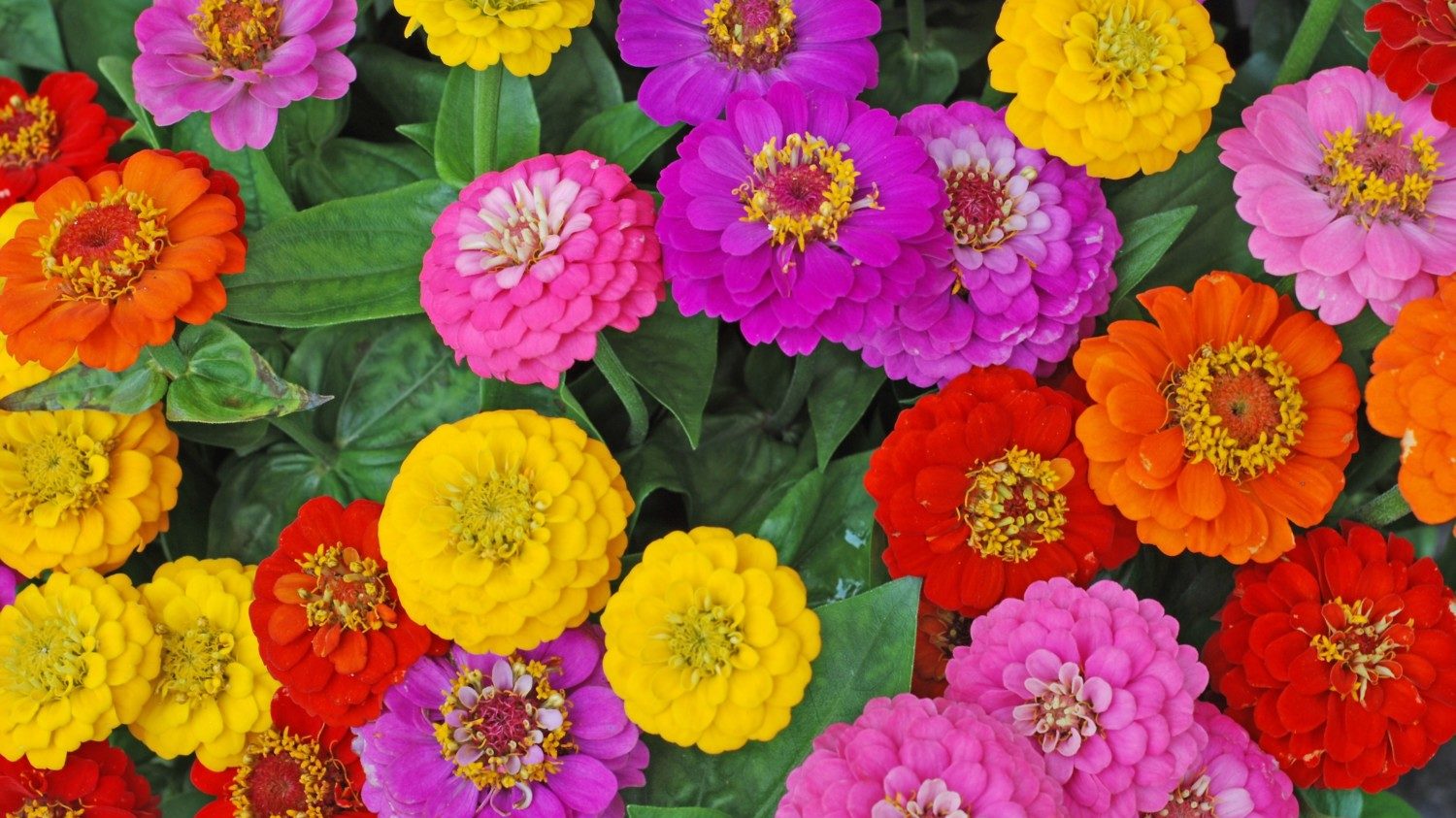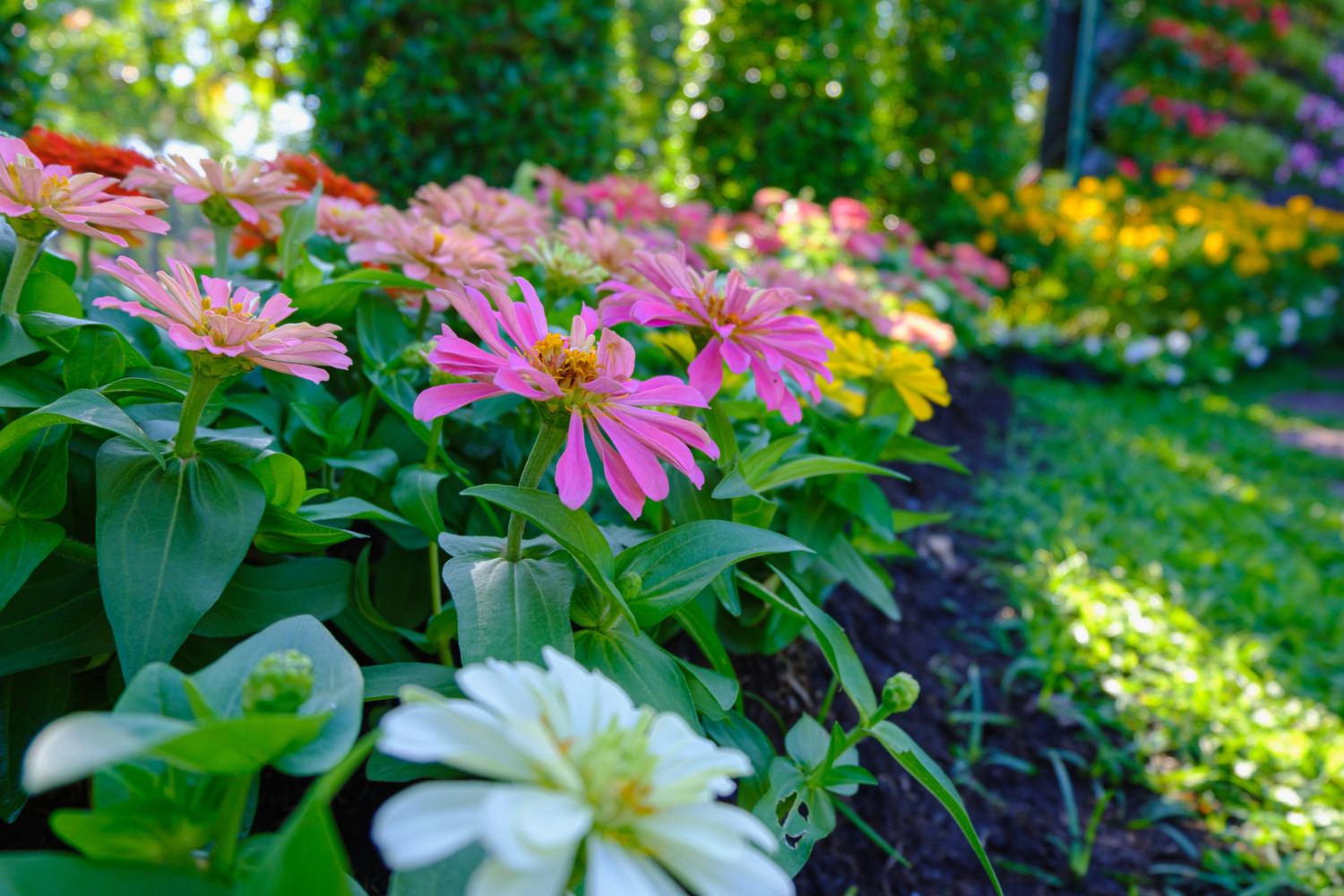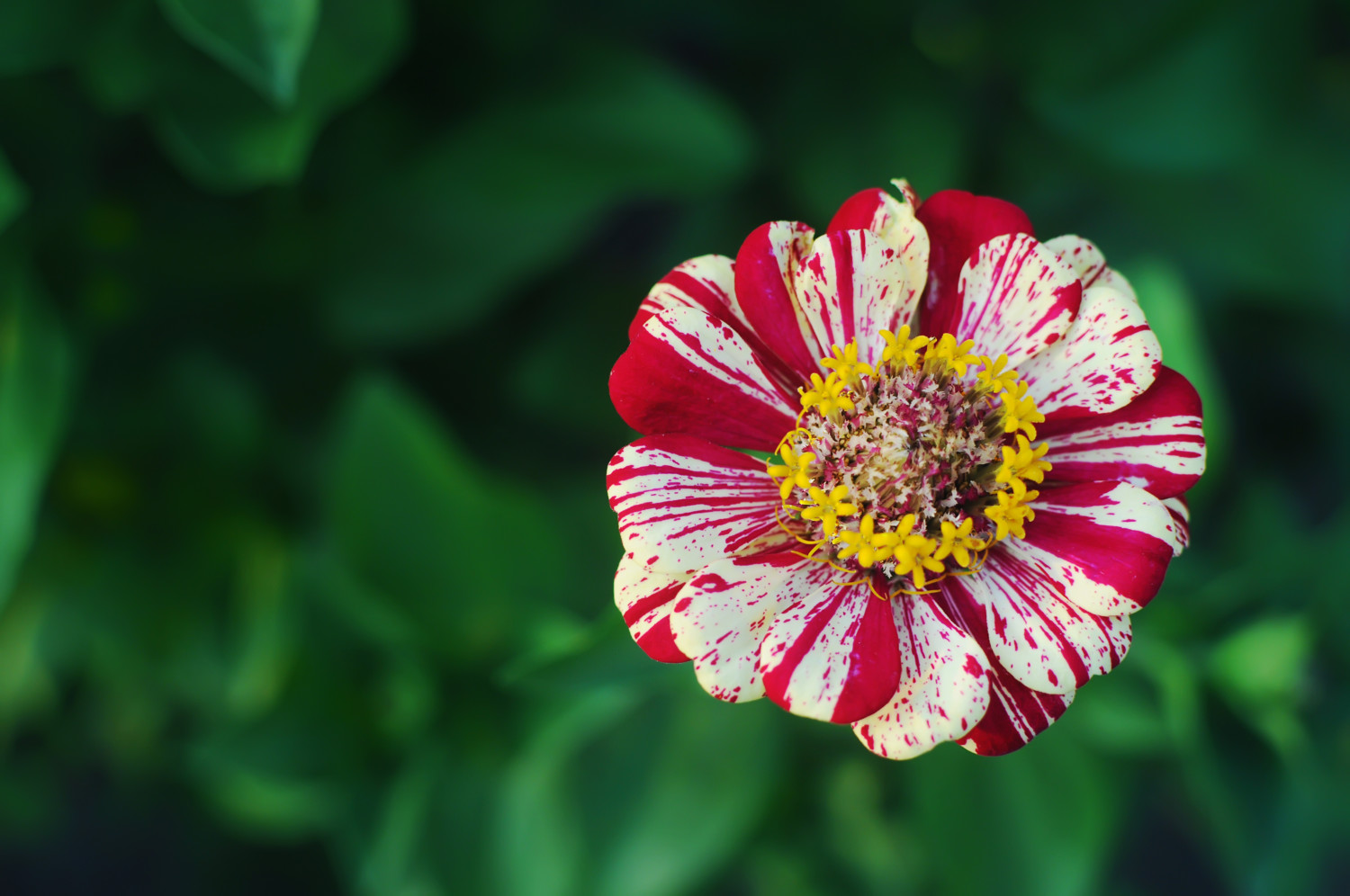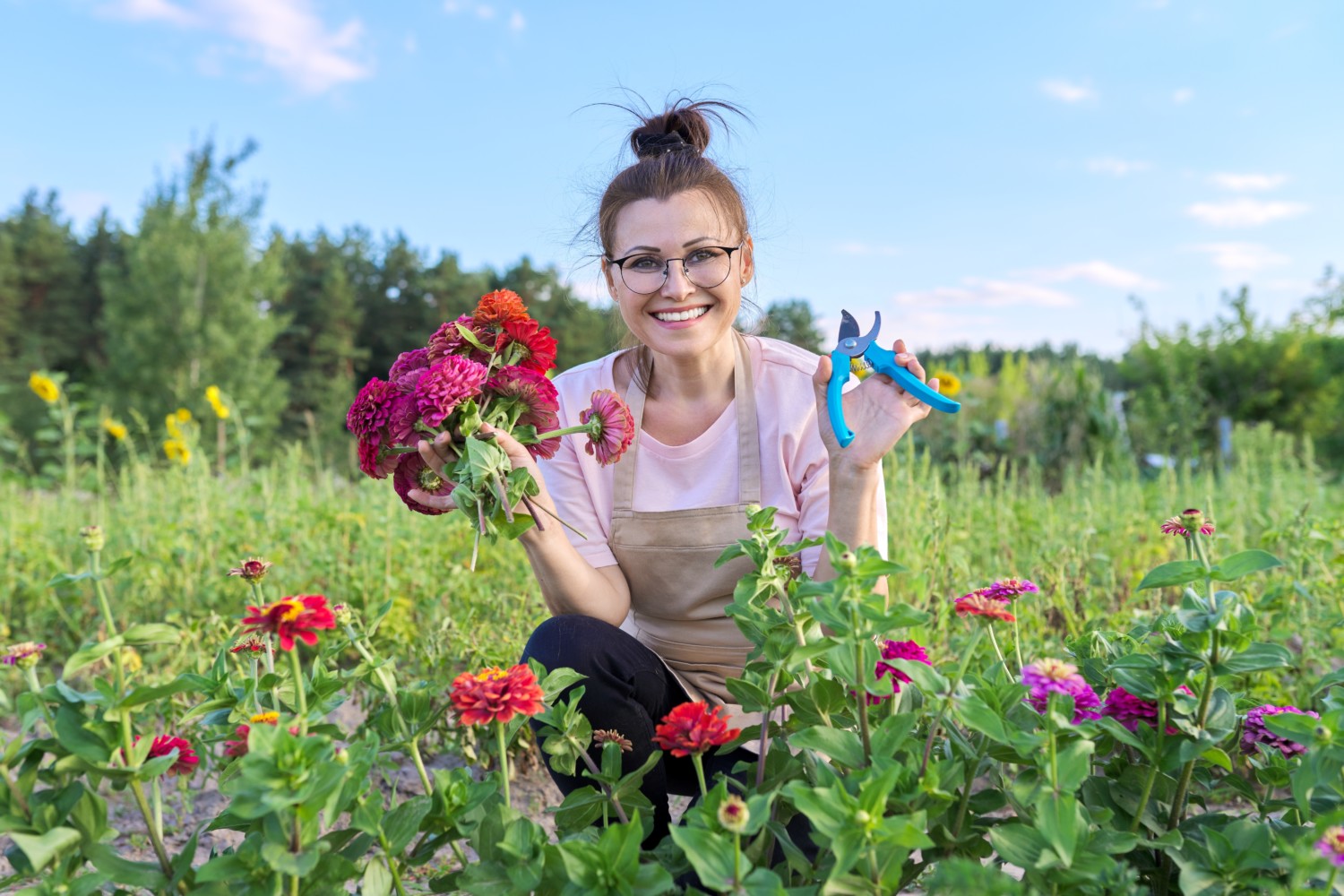How to care for zinnias

The Aztecs originally called them “plants that are hard on the eyes” due to their bright colors —and zinnias, brought to the attention of Europeans in the 1500s by Spaniards conquering Mexico, didn’t become popular in Europe until after the 1700s. In the late 18th century, German botany professor Johann Gottfried Zinn first described the wildflowers that are native to Mexico and Central America, causing them to be named after him.
Today, though, they’re considered an excellent choice for any garden, as zinnias are one of the easiest flowers to grow. Learning how to care for zinnias can help you have a vividly beautiful garden with minimal effort.
Types Of Zinnias
There are three primary types of zinnias, which are part of the Asteraceae family that includes sunflowers, daisies, and asters. Single-flowered zinnias have one row of petals and a visible center. Semidouble zinnias have several rows of petals, but the centers are still visible. Double-flowered zinnias have row upon row of petals with no visible centers.
Zinnias also grow in a variety of eye-catching shapes. For instance, the most common species, called Zinnia elegans, are bushy annuals that grow up to three feet tall and have semi-double to double blooms of rolled petals. The Mexican zinnia grows up to 16 inches tall on hairy, branching stems and has single, daisy-like flowers. There are also cactus zinnias that have giant blooms with 4- to 5-inch faces of narrow, curved petals on plants that grow up to four feet tall.
Zinnias come in a rainbow of colors, as well. According to the Old Farmer’s Almanac, they grow in every shade but blue — including a green hue called “Envy.” There are candy-striped varieties, speckled varieties and flowers in single, brilliant colors. Although they may look diverse, there are no differences in how to care for zinnias of assorted varieties, so you can opt to plant one type or mix it up and grow several.
Planting Zinnias
Zinnias transplanted from a pot into the ground do not fare as well as those planted directly in the ground. If you choose to start the plants indoors, carefully transplant them while they are still young. Plant seeds in an area that receives full sun early in the spring after all danger of frost has passed.
Sow seeds in moist soil 4 to 24 inches apart, depending on the variety (check your seed packet for specific instructions). They should be planted about a quarter of an inch deep in loamy soil, which contains equal parts sand, silt and clay. Soil that is well-drained and rich in organic matter with a pH between 5.5 and 7.5 will produce the best results.
You should begin to see seedlings within a week. However, blooms will not appear for several weeks or even a couple of months, depending on your site, climate and the variety of zinnias you plant. You can also sow a round of seeds every week for several weeks, which will extend the flowering period.
How To Care For Zinnias
Water the plants carefully about three times each week. The soil should feel moist six inches deep around the plants. However, avoid overwatering, as doing so can promote rot, spots and powdery mildew. Adding mulch, compost or fertilizer once the plants are established can help maintain moisture while inhibiting weeds.
Thin the seedlings once they reach 3 inches tall. Giving them 6 to 18 inches of space will maximize air circulation and reduce the chance of the plants developing powdery mildew. Pruning the plants frequently will stimulate the growth of more flower heads. Deadheading old blooms and cutting flowers to enjoy will lead to more flowers blossoming, giving you a longer season of vibrant beauty.
When clipping off dried flower heads, pull the flowers apart and remove the seeds. You can save the seeds in an envelope or baggie labeled with the color and variety and store them in a cool, dry place. Next year, when you are ready to plant again, you will have a plethora of zinnia seeds at the ready. The added benefit of using this method is that the plants will develop into a unique strain of zinnias that flourish in your local conditions over time.

Are you planning to grow these lovely, low-maintenance flowers this year?



